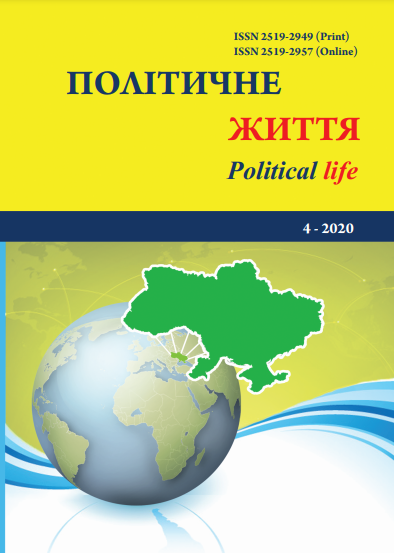. Torture as a tool of modern social control policy
DOI:
https://doi.org/10.31558/2519-2949.2020.4.6Keywords:
torture; ill-treatment; European Court of Human Rights; European Convention on Human Rights; Committee for the Prevention of Torture; Council of Europe; enhanced techniques of interrogation; prevention of torture; investigation of torture; preconditions for torture in the XXI centuryAbstract
The article is focused on research of the phenomenon of torture in the XXI century. In the article, the author presents a thesis that explains not only the resumption of torture as a phenomenon in the second half of the XX century but also spreading of the phenomenon of torture in the XXI century with corresponding dispersal of social control networks and, consequently, increasing of types and kinds of deviants. Thus, on the one hand, national criminal justice systems cannot cope with this task – to deal with deviants only within the formal procedures enshrined in national law against the background of increasing classes, types, types and, consequently, the number of deviants. On the other hand, we have the data of numerous studies and surveys of the population of Europe and North America, where from 1/3 to 1/2 of citizens allow the use of torture against terrorists for the purpose of the same "security". The article concludes that the policy of preventing torture and combating social practices of torture in the XXI century is a reflection of a complex political dualistic process: an attempt to develop more "secure society" with corresponding failure to "secure" it. The article analyzes the models that explain the political preconditions for the use of torture in the second half of the XX – early XXI century for the purposes of "protection of society". Thus, scientists distinguish three models: 1) "security model"; 2) "stability model"; 3) "legitimation model". The article emphasizes that in the society of the XXI century torture exists within two interrelated political spheres, where the first of the spheres is a formalized policy of combating torture, which is shaped and implemented within universal regional and national structures. The second one is informal torture policy, which is shaped within the framework of post-modern modulation of panoptic risk management, where torture is an instrument of modern social control.
References
Ягунов Д. «Malleus Maleficarum» of modern society: preconditions and prevalence of torture in XXI century and the policy of combating torture. Вісник Донецького національного університету імені Василя Стуса. Серія Політичні науки, 2020. 5. С. 58-97.
Диса К. Історія з відьмами. Суди про чари в українських воєводствах Речі Посполитої XVІІ-XVІІІ століття. Київ: Критика, 2008. 304 с.
Were 50 Million People Really Killed in the Inquisition? URL: www.ncregister.com/blog/were-50-millionpeople-really-killed-in-the-inquisition
Peters E. Inquisition. Berkeley: University of California Press, 1989.
Beaumont D. The Spanish Inquisition: Debunking the Legends. URL: www.strangenotions.com/spanishinquisition
Historians say Inquisition wasn't that bad. URL: www.theguardian.com/world/2004/jun/16/
Tracy L. Torture and Brutality in Medieval Literature. Negotiations of National Identity. Rochester, NY, 2002. 326 р.
Lea H. A History of the Inquisition of the Middle Ages. In Three Volumes. Vol. II. New York: Harper & Brothers, Franklin Square, 1888. 587 p.
Greer S. Is the Prohibition against Torture, Cruel, Inhuman and Degrading Treatment Really ‘Absolute’ in International Human Rights Law? Human Rights Law Review, 2015. 15. P. 7-37.
Ягунов Д. Паноптизм і пенальні практики суспільства Постмодерну. Вісник Львівського університету. Філософсько-політичні студії, 2020. Вип. 30. С.240-249/
Ягунов Д. Пунітивне місто постмодерну: до питання про дисперсію соціального контролю у ХХІ столітті. Політичне життя, 2020. Вип. 3. С. 34-50.
Фуко M. Рождение биополитики. Курс лекций, прочитанных в Коллеж де Франс в 1978 – 1979 учебном году. СПб.: Наука, 2010. 448 с.
Amnesty poll finds 29% say torture can be justified. URL: www.bbc.com/news/uk-27387040
Кобзін Д., Черноусов А., Щербань С., Батчаєв В. Оцінка масштабів незаконного застосування сили в поліції України у 2018 році. URL: www.khpg.org/1561465967
Національний моніторинг незаконного насильства в поліції в 2020 році. Авторський колектив: Д. Кобзін, А. Черноусов, С. Щербань. Харків, Харківський інститут соціальних досліджень, 2020. 64 с.
Ритцер Дж. Современные социологические теории. 5-е изд. СПб.: Питер, 2002. 688 с.
Bagaric M., Clarke J. Not Enough Official Torture in the World? The Circumstances in Which Torture Is Morally Justifiable. University of San Francisco Law Review, Spring 2005. P. 581-616.
Ягунов Д. Пенітенціарна політика як складова соціального контролю. Одеса: Фенікс, 2020. 674 с.
Tainted by Torture. Examining the Use of Torture Evidence. A report by Fair Trials and REDRESS, May 2018. 75 p.
Einolf C. The Fall and Rise of Torture: A Comparative and Historical Analysis. Sociological Theory, June 2007. 25. 2.
Rusche G., Kirchheimer O. Punishment and Social Structure. New York: Columbia University Press, 1933.
National Assistance Act 1948. URL: www.legislation.gov.uk/ukpga/Geo6/11-12/29
«Lacatus v. Switzerland», application № 14065/15, judgment 19.01.2021
Blakeley R. Why torture? Review of International Studies, 2007. 33.

